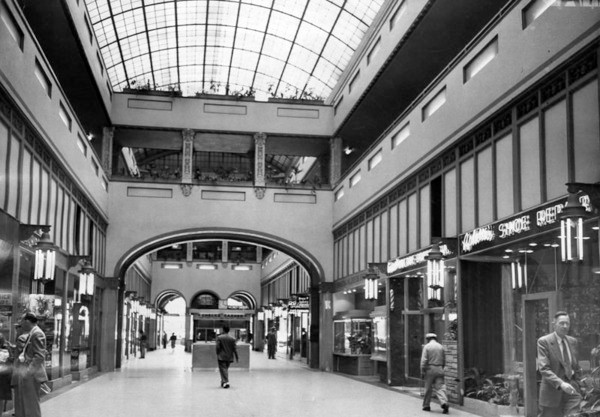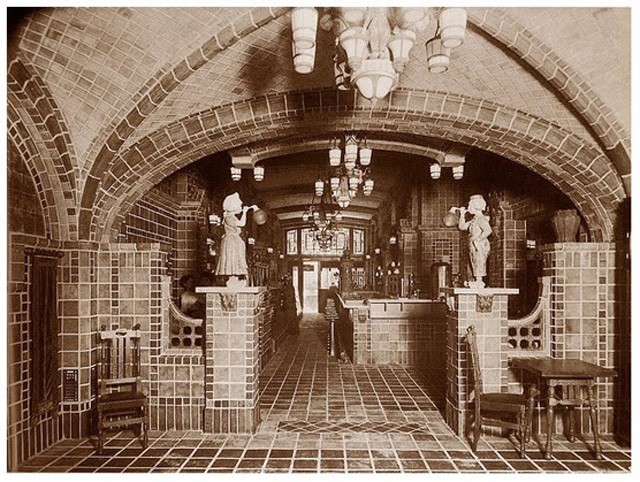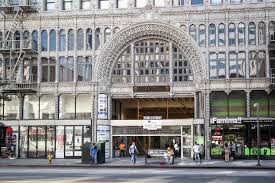Broadway Arcade, Los Angeles
Introduction
Text-to-speech Audio
Images
A Black and white shot of the inside of the Arcade.

An original photo of an early chocolate shop located in the Arcade.

A shot of the outside of the Arcade as it stands today.

Backstory and Context
Text-to-speech Audio
This piece of land was used as a school until 1904 when the school board decided to lease it out. This was the beginning of Mercantile place, a development decised by C. Westley Roberts, who secured a ten-year lease from the Los Angeles School Board and bought the material from the old brick school building, which was to be demolished. It opened in 1905 and developed quickly over the following years with the addition of the Woodmen of the World lodge hall, the Curtis-Newhall newspaper advertising business, and MacDonald's hairdressing and beauty.
After the ten-year lease was up, the school board realized that the property's value had risen from $400,000 to $1 million, meaning that the previous lease was massively undervalued. Rather than renew the lease on different terms, the board decided to sell the building but allowed it to be leased until a buyer could be found.
In 1919 they sold the property to President of Hippodrome Theater Company Adolph Ramish for $1.15 million, who then sold it on for somewhere between $1.5 and $2.5 million. The new owners were a business group led by A.C. Blumenthal who held an architectural design competition for their new purchase. It was won by Kenneth MacDonald and Maurice Couchot
Businesses began moving in by January, 1925. The Arcade was described by some as a "City Within a City." The U.S. Post Office rented space in the arcade for $1 a year, but after 15 years the rate was increased to $1,500 a year. By 1946 it was $6,000 a year, and the Post Office had to be abandoned. Other improvements included twelve bowling lanes in 1940 and there was even a proposal to install an underground garage.
Sources
History. Spring Arcade Building. Accessed July 08, 2017. http://springarcadebuilding.com/history/.
Broadway Arcade Building, Downtown, Los Angeles, CA (1922-1924). Library Washington. Accessed July 08, 2017. http://pcad.lib.washington.edu/building/922/.
Mercantile Place: The Tiny, Lost Shopping Street of Downtown L.A.. KCET. February 28, 2014. Accessed July 08, 2017. https://www.kcet.org/shows/lost-la/mercantile-place-the-tiny-lost-shopping-street-of-downtown-la.
